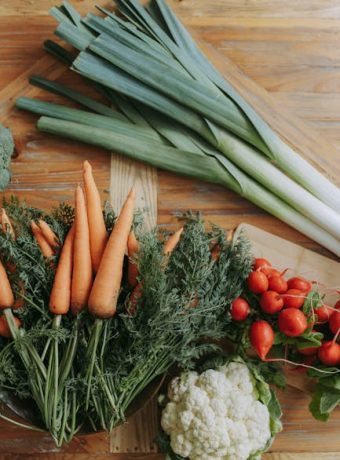Seasonal Fruits: Best Winter Choices for Compotes
Winter is a magical time of year, with its crisp air and cozy evenings by the fire. It’s also a fantastic season for indulging in rich, warming desserts. One delightful way to embrace the season is by making compotes from the best winter fruits. Not only are these fruits abundant during the colder months, but they also offer a burst of flavor and nutrition. In this post, we will explore the top winter fruits for compotes, their benefits, and how to make the most of them in your kitchen.
Understanding Winter Fruits: A Seasonal Delight
Winter fruits are those that reach peak ripeness and flavor during the cold months. They are often rich in vitamins and antioxidants, which can help boost the immune system during flu season. Some are available year-round but are at their best during winter.
Why Choose Winter Fruits for Compotes?
Compotes are simple yet versatile desserts made by cooking fruit with sugar, spices, and sometimes alcohol. The reason winter fruits are ideal for compotes is their natural sweetness and firm texture, which hold up well during cooking, creating a luscious and satisfying dessert.
Top Winter Fruits for Compotes
1. Apples
Apples are a quintessential winter fruit, available in a variety of flavors and textures. They are rich in fiber and vitamin C, making them a healthy choice for compotes. Popular varieties like Granny Smith, Honeycrisp, and Fuji offer different levels of sweetness and tartness, perfect for creating a balanced compote.
2. Pears
Pears provide a delicate sweetness and smooth texture to compotes. They are an excellent source of dietary fiber and vitamin K. Bosc and Anjou pears hold their shape well when cooked, making them ideal for compotes.
3. Cranberries
Cranberries are small, tart berries that are a staple of winter cuisine. They are packed with antioxidants and vitamin C. Cranberry compotes are perfect for adding a tangy contrast to rich desserts or savory dishes.
4. Pomegranates
Pomegranate seeds, or arils, bring a burst of color and flavor to any compote. They are rich in antioxidants and vitamin C. Their jewel-like appearance and sweet-tart flavor can elevate the visual and taste appeal of your compote.
5. Citrus Fruits
Oranges, grapefruits, and tangerines are not only refreshing but also add a zesty kick to compotes. They are high in vitamin C, which is crucial for maintaining good health in winter. Adding citrus to your compote can brighten up the flavors and add a refreshing note.
How to Make the Perfect Winter Fruit Compote
Simple Steps to Follow
Crafting a delicious compote is easier than you think. Here’s a simple guide:
- Prepare the Fruit: Wash, peel, and chop your chosen fruits into uniform pieces.
- Combine Ingredients: In a saucepan, combine the fruit with sugar (or a sweetener of your choice), spices like cinnamon or nutmeg, and a splash of water or juice.
- Cook Gently: Bring the mixture to a simmer over low heat. Cook until the fruit is soft and the mixture thickens, stirring occasionally.
- Add Flavor: Enhance the compote with a dash of vanilla extract or a splash of liquor like brandy for added depth.
- Cool and Serve: Let the compote cool slightly before serving. It can be served warm or cold, depending on your preference.
Actionable Tips for the Best Compotes
Tip 1: Balance Sweetness and Tartness
When making compotes, balancing sweetness and tartness is key. Adjust the sugar according to the fruit’s natural sweetness and your taste preference. If using very sweet fruits like ripe pears, reduce the sugar. For tart fruits like cranberries, you might want to add a bit more.
Tip 2: Experiment with Spices
Spices can transform your compote into a fragrant delight. Cinnamon, nutmeg, and cloves are classic choices, but don’t hesitate to experiment with star anise or cardamom for a unique twist.
Tip 3: Use a Variety of Fruits
Mixing different fruits can create complex flavors and textures. For example, apple and cranberry compote offers a delightful combination of sweetness and tartness, while pear and pomegranate provide a luscious, exotic flavor profile.
Tip 4: Storage and Serving Suggestions
Compotes can be stored in the refrigerator for up to a week or frozen for later use. Serve them over pancakes, waffles, yogurt, or ice cream, or use them as a filling for pastries and cakes.
Conclusion: Embrace the Season with Winter Fruit Compotes
Winter fruit compotes are an excellent way to enjoy the bounty of the season while indulging in a healthy and delicious treat. By choosing the right fruits and adding your favorite spices, you can create a compote that delights your taste buds and warms your soul. Whether you’re making it for a cozy night in or as a topping for a festive dessert, a well-made compote is sure to impress.
So, head to your local market, pick up some fresh winter fruits, and start experimenting with your own compote creations. There’s no better way to savor the flavors of winter!



